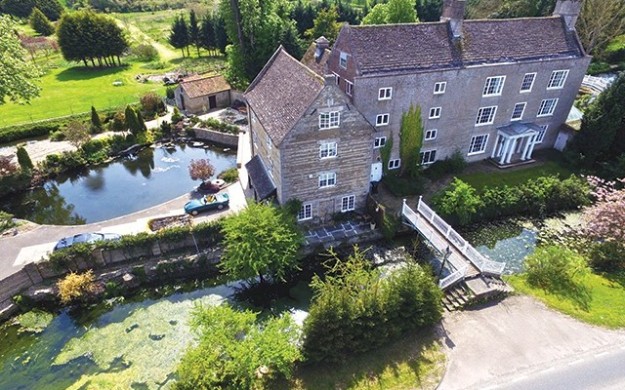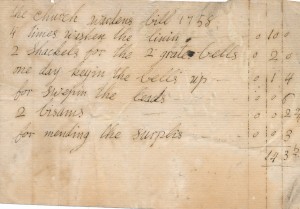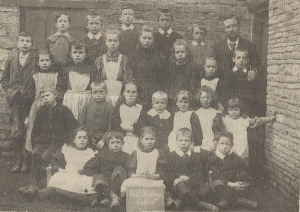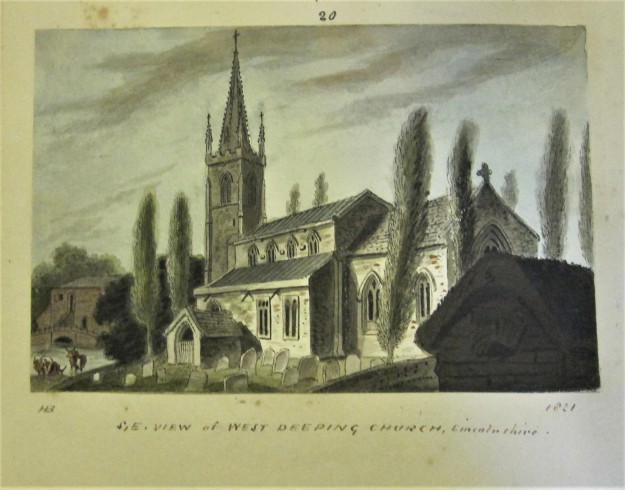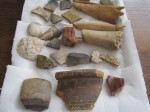The end of the year is fast approaching; it’s an ideal opportunity –
- to thank everyone who has supported West Deeping Heritage Group during 2021
- to reflect on what’s been achieved
- to look forward to the new year ahead
- to wish everyone all the best for 2022
There were just two talks in the last year – in September and November – both well supported, perhaps because they were held in the afternoon rather than the evening.

Lady of Depyng, Margaret Beaufort, mother of Henry VII was presented by local historian and re-enactor Chris Carr.
Margaret Fletcher and Dorothy Halfhide of the Thorney Society gave an illustrated talk on Strangers in Thorney.
Two more talks are planned for 2022 – the first on Tuesday 18th January, when David Mainwaring will present Pease, Puter and Piggs – a picture of a Lincolnshire village during the Tudor and Stuart period compiled from contemporary inventories and wills. The next talk will be on Tuesday 1st March, Exploring the history of education in West Deeping.
 Archaeology has been one of the most popular topics in our programme so it was no surprise that a post about the discovery of a Bronze Age spearhead by archaeologists at the Rectory Farm site caused a flurry of excitement for those who follow the website. In July, the opportunity to get digging and find out more about the site was a sell-out.
Archaeology has been one of the most popular topics in our programme so it was no surprise that a post about the discovery of a Bronze Age spearhead by archaeologists at the Rectory Farm site caused a flurry of excitement for those who follow the website. In July, the opportunity to get digging and find out more about the site was a sell-out.
The good news is that more visits are planned for 2022, when it is hoped to have an open day along with an outreach programme for local schools.
Strictly speaking, it wasn’t a Heritage Group outing, but in December, there was a fascinating trip to the Loughborough-based Taylor’s Bell Foundry with the group of ladies who have recently taken up hand bell ringing. Our own village hand bells were bought from Taylor’s in 1904 and have been played by many generations for many different occasions.
 A group of us gave a performance (follow the link for a video recording) at a concert to celebrate the installation of disabled facilities and a servery at the village church in October. For the village archivist, it has been most interesting to discover original documents at the Bell Foundry Museum relating to the tower bells as well as our hand bells. Expect another website post in the New Year!
A group of us gave a performance (follow the link for a video recording) at a concert to celebrate the installation of disabled facilities and a servery at the village church in October. For the village archivist, it has been most interesting to discover original documents at the Bell Foundry Museum relating to the tower bells as well as our hand bells. Expect another website post in the New Year!
There may not have been much face-to-face contact in the last two years, but the number of visitors on the West Deeping Heritage website, since it started in May 2013, has grown to a total of 14,500 and the number of page views is getting on for 45,000. There are 77 “followers”, who get automatic updates every time something is posted. As well as the News and Programme postings, the most popular pages by far are the ones about the Stamford Canal, the Welland Navigation and Molecey’s Mill.
A positive effect of the lockdowns imposed during the COVID pandemic has been the increasing number of people have made personal contact through the website and the Facebook page during the last year.
Particular thanks must go to Dale Burton, descended from families in the Deepings but now living in Australia. He has found a whole list of names to be added to the Roll of Honour of servicemen linked with the Deepings who fought in the Great War. He has discovered not only his own relatives, William and Frank Geeves, Thomas Howitt Lambert and Algernon Edwin Lambert, but also two men who had left England before the war began. Both Walter Templeman and Robert Waltham served with the Australian Imperial Force and lost their lives in France. Dale’s research also found service records for William Jibb, the latest name to be added to the Deepings Roll of Honour.
Thanks also to everyone who responded to a question about a photograph of pupils at West Deeping village school taken before its closure in 1971. All the children have now been identified, although we have still to find the first names of the nephews of former headmistress, Miss Day, who attended the school for a short period. The talk in March 2022 will be combined with a display of photographs and information about the history of schooling in West Deeping and hopefully attract former pupils for a school reunion!
Thanks to descendants of village families – including the Figg-Smiths, the Masons, the Merrishaws, the Neals, the Coopers, the Hemsills – and to people who have recently come to the village, who have asked what there is to know about where they live. Their queries have all provided an excuse for sifting through the village archives and their contributions have helped to put pieces of the historical jigsaw together! Watch out for future additions to the Family History and Buildings web pages.

West Deeping remembers 1919
A personal “thank-you” to everyone who has bought and commented so favourably on the book West Deeping remembers 1919. It even got a press review in the Western Front Association Bulletin earlier this year. The book title implies that it covers a relatively short time frame but with a cast of over two hundred characters and a village trail of more than fifty buildings, it serves not only as a Roll of Honour but as a record of life in this small South Lincolnshire village a hundred years ago.
That’s enough history and heritage news for 2021, although there’s sure to be something I’ve forgotten to mention.
Finally, it remains to wish everyone, past present and future supporters of West Deeping Heritage, all the very best for 2022.









